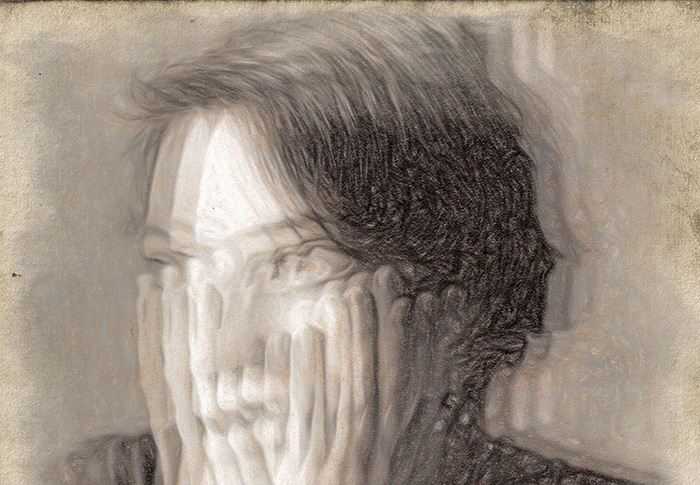
It’s normal for most people to experience symptoms of anxiety from time to time. Everyone gets nervous for a big presentation, a big family gathering, a job interview, or a first date. Most people also find themselves slightly on edge with the seemingly relentless demand to be available all the time.
There is a big difference between some general, short-term anxiety and a diagnosed anxiety disorder, though. The symptoms of anxiety might look similar between the two but those with diagnosable anxiety experience it almost constantly.
How do you know if someone has an anxiety disorder? It’s always best to consult a psychiatrist for an official diagnosis but there are some clear symptoms of anxiety to look for. Here are the signs that someone you know might have one.
Symptoms of anxiety
Those with anxiety disorders experience the same anxiety as others but on a regular or constant basis. Usually, their symptoms of anxiety make their everyday lives more difficult.
Sometimes they find it impossible to carry out what seems like a simple task because of the overwhelming fear and nervousness.
There are quite a few different symptoms that help determine whether someone has an anxiety disorder.
Some people experience all symptoms while others have only a few.
Worrying excessively
Feeling on edge, frustrated, or agitated
Having trouble sitting still; feeling restless
Experiencing fatigue
Difficulties focusing or concentrating
Feeling irritable or angry
Tense muscles
Troubles with falling asleep or staying asleep
Experiencing panic attacks
Avoiding social situations
Holding irrational fears
Different types of anxiety disorder
Additionally, psychologists grouped various signs of anxiety into different categories. Each category falls under the general umbrella of anxiety disorder but the categories help provide more specific comprehensive treatment. The types of symptoms people experience determine which category they fall into. There are three main categories of anxiety disorder.
Generalised anxiety disorder
People with a generalised anxiety disorder (GAD) live with a heightened sense of worry or anxiety most or all days. They must experience anxiety regularly for at least six months in order to receive a GAD diagnosis. Their fears may surround things like family life, work, school, social situations, or general happenings in life. Symptoms of a generalized anxiety disorder include:
Feeling tense, on edge, or restless
Tiring easily
Having trouble focusing or concentrating
Getting irritable or frustrated quickly
Having tense muscles
Struggling to control feelings of worry
Having difficulty falling asleep or staying asleep
Generalised anxiety disorder often interferes with the person’s ability to navigate life. It may lead to problems at work or in school, or they might have a difficult time in social situations. This might make it challenging for them to meet people or form lasting relationships.
Panic disorder
Many people think everyone with an anxiety disorder has panic attacks. This isn’t always the case. People who experience panic attacks usually receive a panic disorder diagnosis. Panic attacks are sudden and severe moments of incredible fear that come on and peak within minutes. They are often unexpected and might come on at any time. A panic attack includes:
Difficulties controlling breathing
Accelerated heart rate or heart palpitations
Tremors or shakes
Sweating
Overwhelming feelings of inevitable disaster
Inability to stop the oncoming attack
Panic attacks can happen anywhere at any time. Some people have panic attacks so severe that it keeps them from going places out of fear. If you know someone who lives with panic attacks that significantly interfere with their lives, you need to help them find treatment.
Panic attack symptoms are terrifying and overwhelming, especially when you don’t expect them.
Phobia disorder
Phobias are intense fears of certain objects or situations. Some phobias seem natural while others might not make sense to some people. Regardless of the object or situation, phobias are very real to the person who lives with them. They usually try to avoid anything that might place them in front of what they fear.
People with phobias may avoid these objects or situations to the point where it interferes with their lives. Psychiatrists break down the phobia disorder category into a few groupings, such as:
Specific phobias: flying, spiders, clowns, blood, animals, etc.
Social anxiety disorder: general fear of social situations
Agoraphobia: an intense fear of using public transportation, being in open spaces, being in close quarters, standing in lines or crowds, or being outside of the home alone
Separation anxiety disorder: fear of being separated from a person they are attached to
Treating Anxiety Disorder
Treating anxiety disorder is a careful practice as some clinicians treat the symptoms rather than the source. Facilities that understand the process of properly treating anxiety disorder understand it’s deeper than the symptoms.